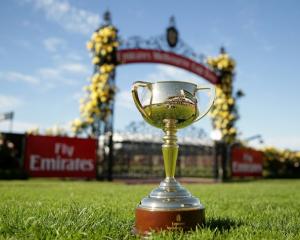The southern jumps racing fraternity will gather at Riverton in an effort to rally support for their sport, which has faced being wiped off the national racing calendar.
The first of four educational clinics for potential hurdle and steeplechase starters, headed by leading central districts trainer John Wheeler, will be held this weekend at Riverton.
Last year’s poor season, plagued by low horse and rider numbers, meant jumps racing faced being effectively wiped off the New Zealand Thoroughbred Racing (NZTR) calendar.
NZTR national jumps co-ordinator Paul Claridge admitted the sport’s national body took some convincing to support another season of jumping.
“NZTR are looking at the return on investment and the numbers that were there last year didn’t support the continuation of it,” Claridge said.
“We have managed to convince them to give us a two-year grace [period] to see if we can get it back on track and indications are, so far, this year, that we are well and truly on the way.”
Claridge heads a steering committee which will oversee the programming of southern jumps racing.
Committee members Jo-Ann Gordon and Alan Browne had been key in rallying those with an interest in jumps racing together, Claridge said.
“There has been some sensational work going on in the south by Jo-Ann Gordon and Alan Browne.
“Jo said the indications are that for the first educational day down there coming up this weekend that there will be 25-30 horses in attendance.
“That is more than we had jump in the whole of the South Island last year.”
The inability to get jumping horses schooled and worked has undoubtedly been a major frustration for trainers.
The committee has worked on addressing the issue of rider availability and say signs are positive.
“We have identified some people that have expressed an interest in schooling and getting their jumps licence and we are working with them to get them up to speed,” Claridge said.
“That is not necessarily going to happen overnight. But, at least we are going in the right direction and it is going to help make things a lot easier for us in the South Island in the future.”
It is hoped the track rider shortage will be solved by a mixture of locals and overseas imports.
Up to three more northern hemisphere riders could ride in the South Island this winter.
“There is the possibility of another couple of English and Irish boys, so we are in negotiations with them,” Claridge said.
“We are maybe even looking at relocating a couple of guys and girls from the North Island down to the South Island.”











